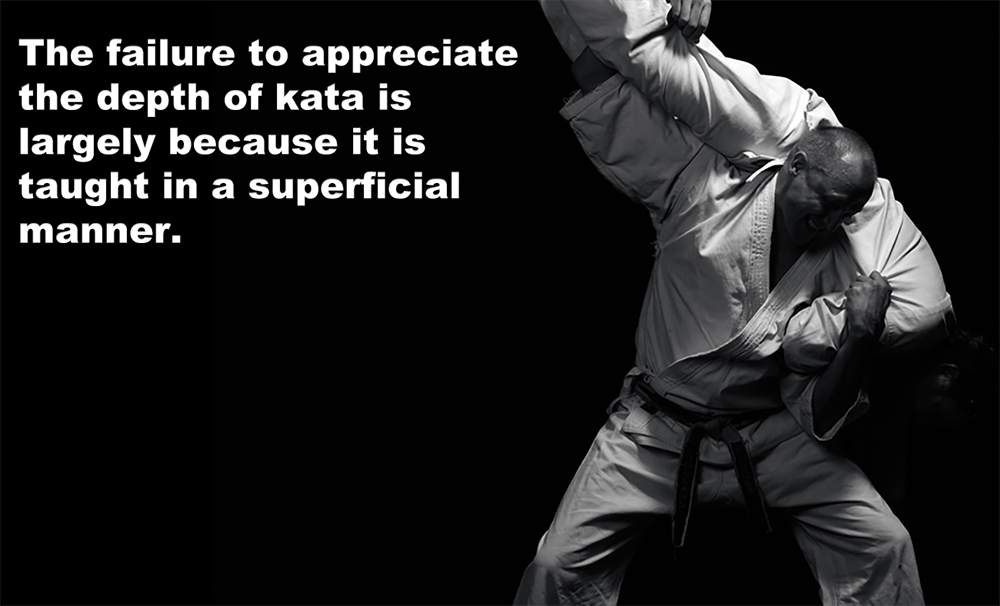
The failure to appreciate the depth of kata is largely because it is taught in a superficial manner.
Posted by ADAM CARTER on AUG 30, 2022

The failure to appreciate the depth of kata is largely because it is taught in a superficial manner.
In one of my recent articles a comment was made that if we don’t know the applications that are contained in kata, then why do we still practice the kata?
The fact is that there is no single correct application for any movement within the kata. Regardless of the original intended purpose of kata, the perceived purpose and value of it is always going to be dependent upon the mindset of the person practicing it.
It’s true that an individual can practice kata for any number of reasons. However, kata came into being as the memories of somebody’s experiences. They are a collection of combative applications and principles borne of the real-life experiences of an individual.
There is a difference between “the purpose of kata” and “the original purpose of kata”. The original purpose is the preservation and dissemination of combative methods, while also providing a supplementary method of solo-training.
However, there can be no doubt that kata has other purposes today. People can and do practice kata for art, sport, health, enjoyment, etc. And this is fine as long as everyone understands that the training method match’s the defined objective.
“Bunkai” shouldn’t just be about “what does this do”, but also “how does it work?” I think that opens a whole new world of exploration and that is where we get into a deeper understanding.
I think the failure to appreciate the depth of kata is largely because it is taught in a superficial manner – to pass a grade, to win a tournament etc. However, it may well also be that students want to be taught in a superficial way?
Many students, and instructors too, if they are not learning a new kata after a few months they may feel they are not moving forward and progressing, or just become bored.
Practitioners seem to forget that there were no belts, gradings or tournaments at one time in Okinawa, the masters of old studied very few kata for self-protection and knew them in much more depth than we do today.
This lack of understanding the “applications” in kata is perhaps born of the fact that the underlying principles of the karate you practice are not understood either.
Often a student, and/or an instructor needs to view any movement (the technique) in its entirety, rather than what is the norm, the end of the technique.
Discovery Learning was introduced by American psychologist Jerome Bruner in 1961, and is a method of Inquiry-Based Instruction. This popular theory encourages learners to build on past experiences and knowledge, use their intuition, imagination and creativity, and search for new information to discover facts, correlations and new truths. Learning does not equal absorbing what was said or read, but actively seeking for answers and solutions themselves.
As an example, a less experienced student should be able to perform a kata more or less properly, and demonstrate the primary applications for the moves. An advanced student should have a much more refined kata, and in application practice, should be able to flow back and forth in the kata, demonstrating primary and secondary applications, combinations, alternate strategies, etc. which he/she has uncovered through “Discovery Learning” and pressure testing.
There are some who view kata mainly as exercise, or as martial arts aesthetics, or as personal self-expression, or mainly combative.
Personally, I prefer the combative interpretation of kata. The combative techniques and principles are primary for me, but it comes down to always knowing “what” I am are doing and “why” I am doing it whenever practicing kata. As such, kata practice provides boundlessly diverse experiences in training….. understanding the differences is key.
![]() Photo Credit: Gavin Mulholland – With thanks to Iain Abernethy
Photo Credit: Gavin Mulholland – With thanks to Iain Abernethy
